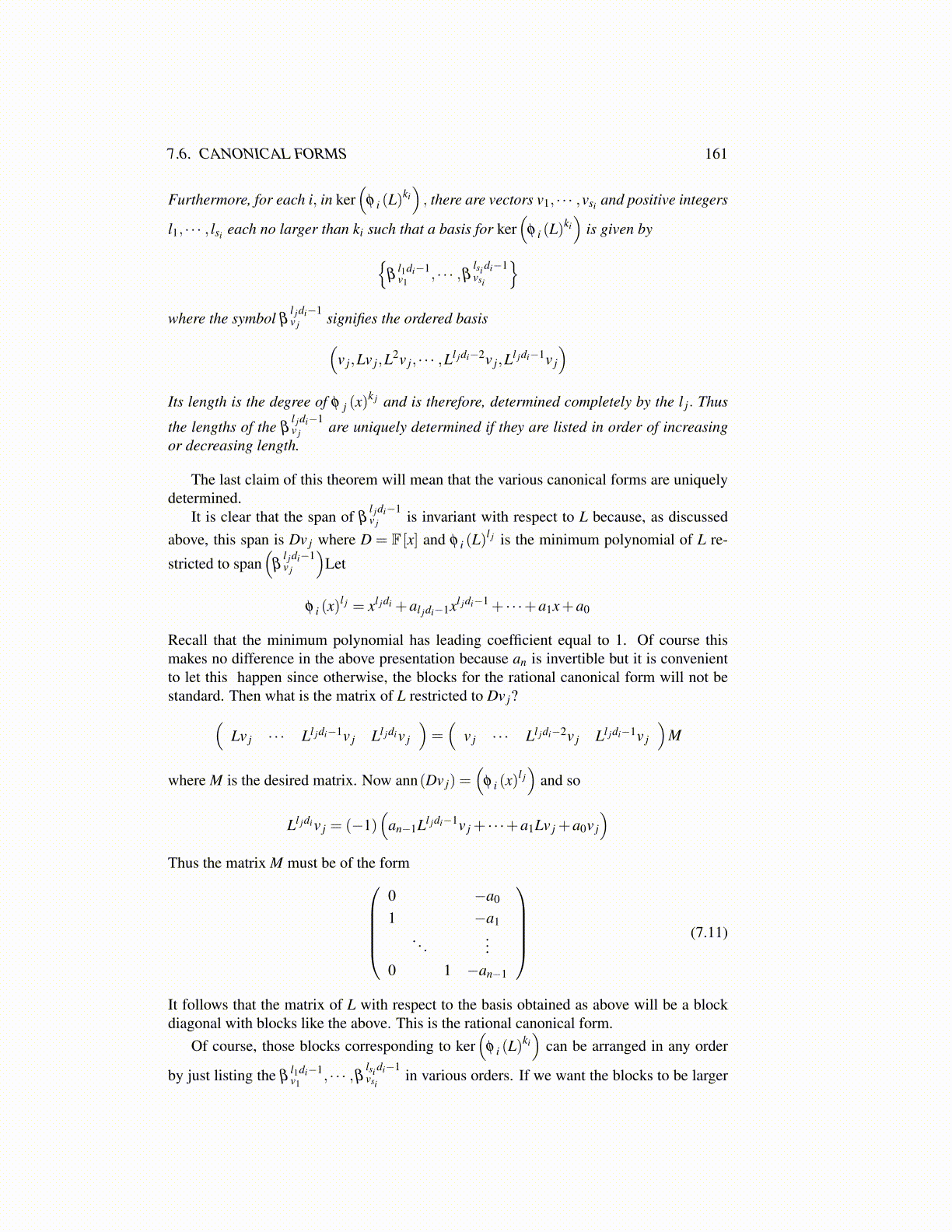
7.6. CANONICAL FORMS 161
Furthermore, for each i, in ker(
φ i (L)ki), there are vectors v1, · · · ,vsi and positive integers
l1, · · · , lsi each no larger than ki such that a basis for ker(
φ i (L)ki)
is given by{β
l1di−1v1
, · · · ,β lsi di−1vsi
}where the symbol β
l jdi−1v j signifies the ordered basis(
v j,Lv j,L2v j, · · · ,Ll jdi−2v j,Ll jdi−1v j
)Its length is the degree of φ j (x)
k j and is therefore, determined completely by the l j. Thus
the lengths of the βl jdi−1v j are uniquely determined if they are listed in order of increasing
or decreasing length.
The last claim of this theorem will mean that the various canonical forms are uniquelydetermined.
It is clear that the span of βl jdi−1v j is invariant with respect to L because, as discussed
above, this span is Dv j where D = F [x] and φ i (L)l j is the minimum polynomial of L re-
stricted to span(
βl jdi−1v j
)Let
φ i (x)l j = xl jdi +al jdi−1xl jdi−1 + · · ·+a1x+a0
Recall that the minimum polynomial has leading coefficient equal to 1. Of course thismakes no difference in the above presentation because an is invertible but it is convenientto let this happen since otherwise, the blocks for the rational canonical form will not bestandard. Then what is the matrix of L restricted to Dv j?(
Lv j · · · Ll jdi−1v j Ll jdiv j
)=(
v j · · · Ll jdi−2v j Ll jdi−1v j
)M
where M is the desired matrix. Now ann(Dv j) =(
φ i (x)l j)
and so
Ll jdiv j = (−1)(
an−1Ll jdi−1v j + · · ·+a1Lv j +a0v j
)Thus the matrix M must be of the form
0 −a0
1 −a1. . .
...0 1 −an−1
(7.11)
It follows that the matrix of L with respect to the basis obtained as above will be a blockdiagonal with blocks like the above. This is the rational canonical form.
Of course, those blocks corresponding to ker(
φ i (L)ki)
can be arranged in any order
by just listing the βl1di−1v1
, · · · ,β lsi di−1vsi
in various orders. If we want the blocks to be larger